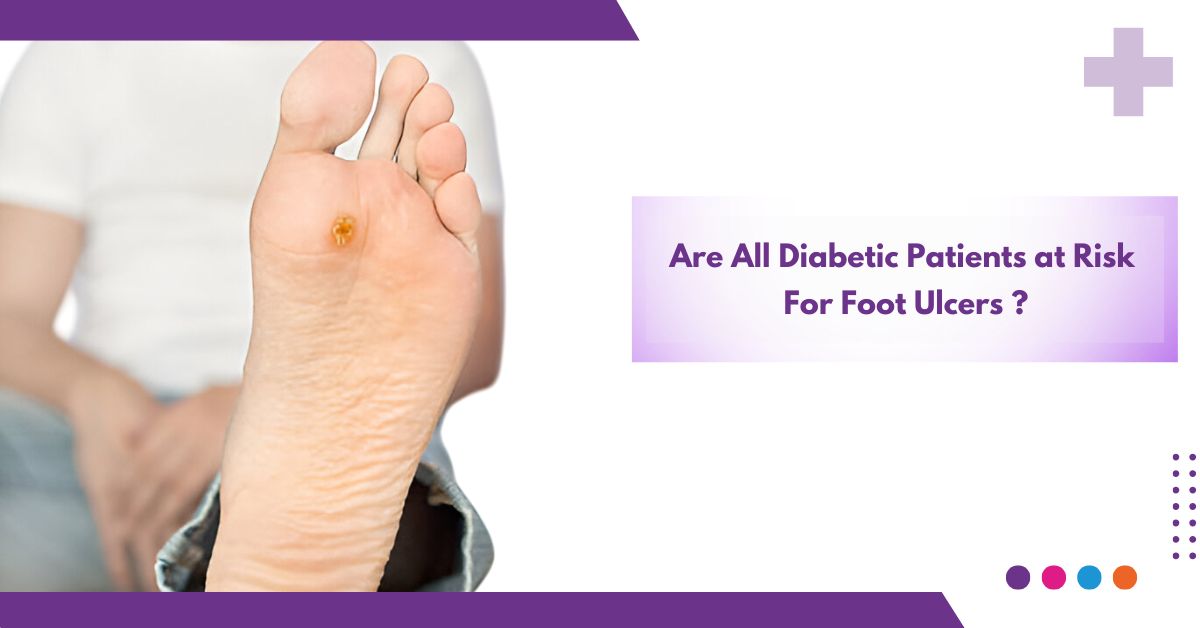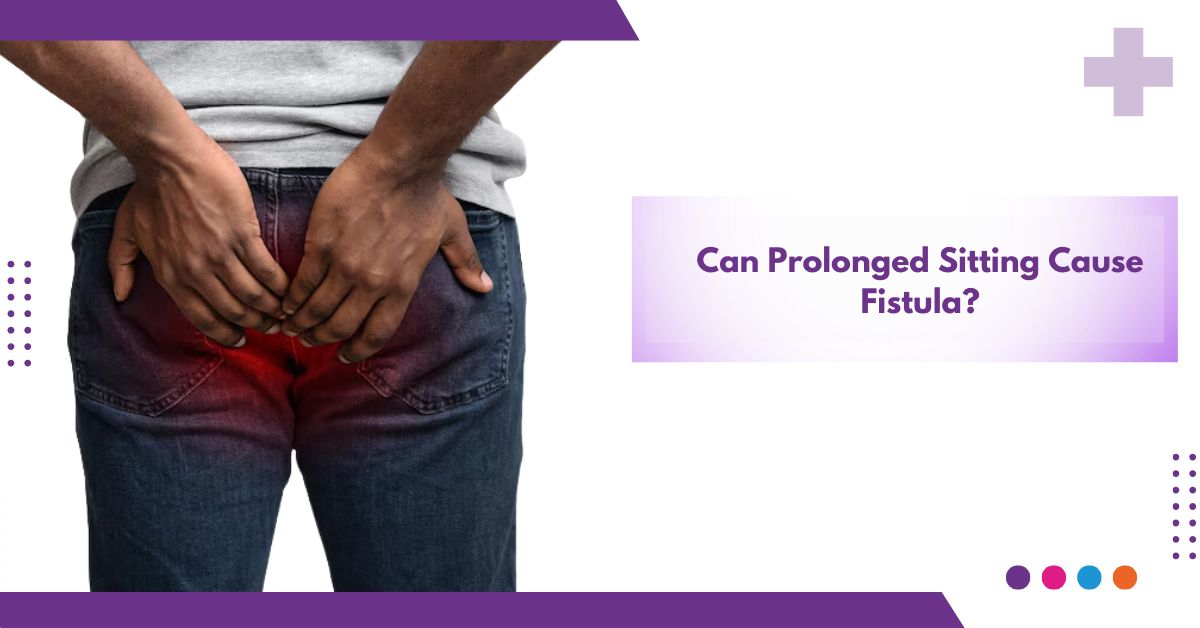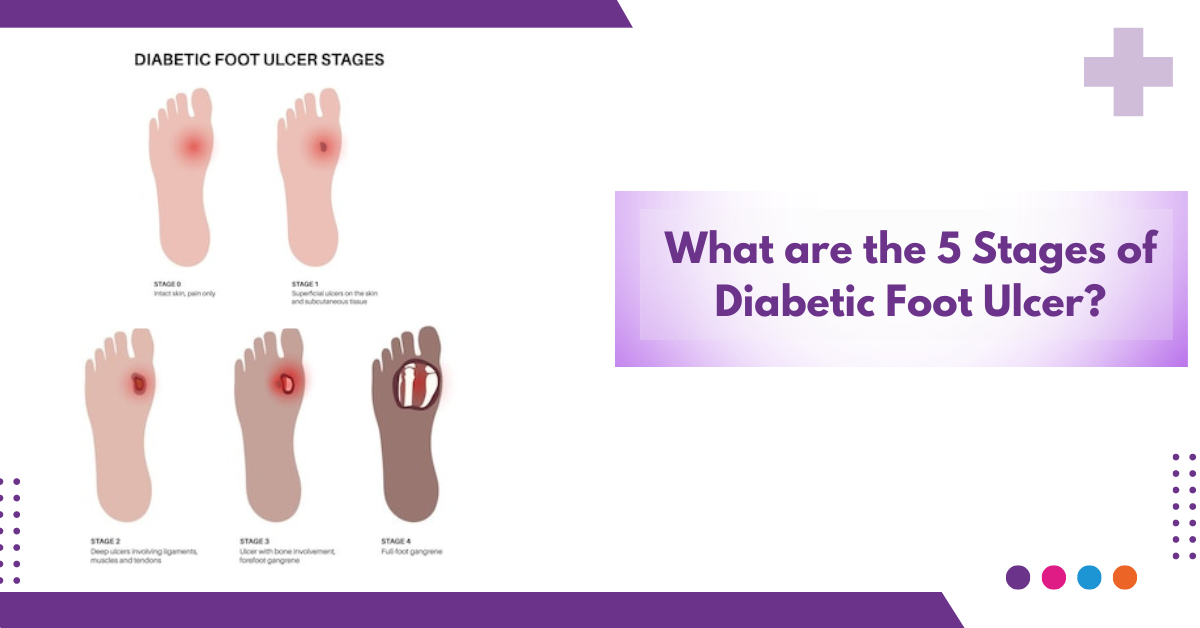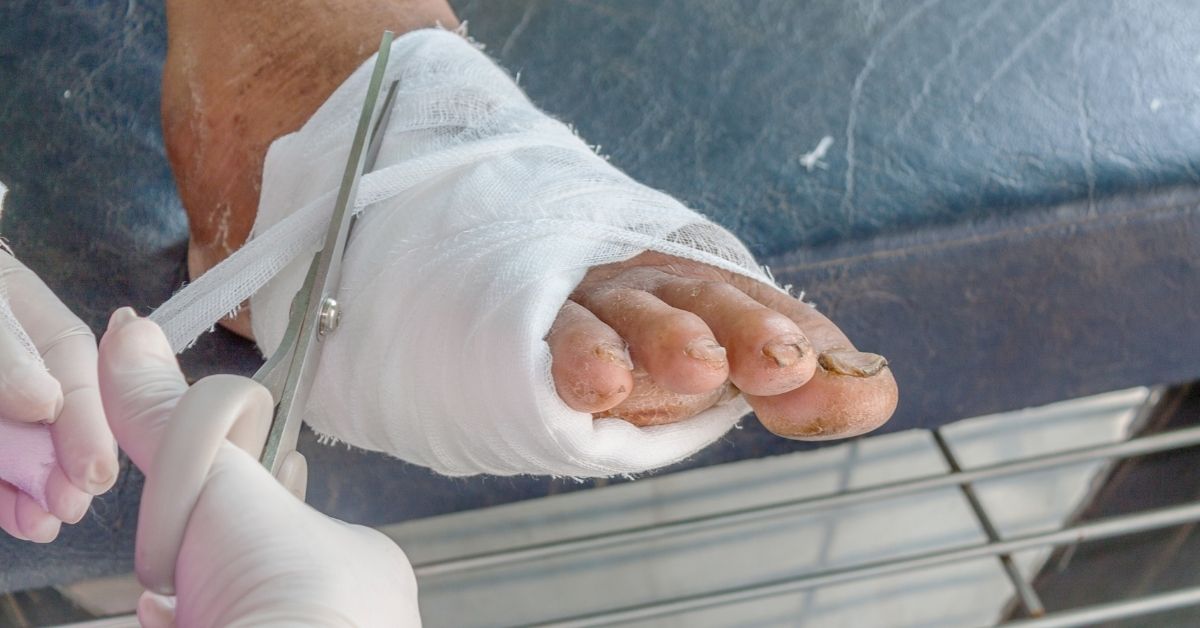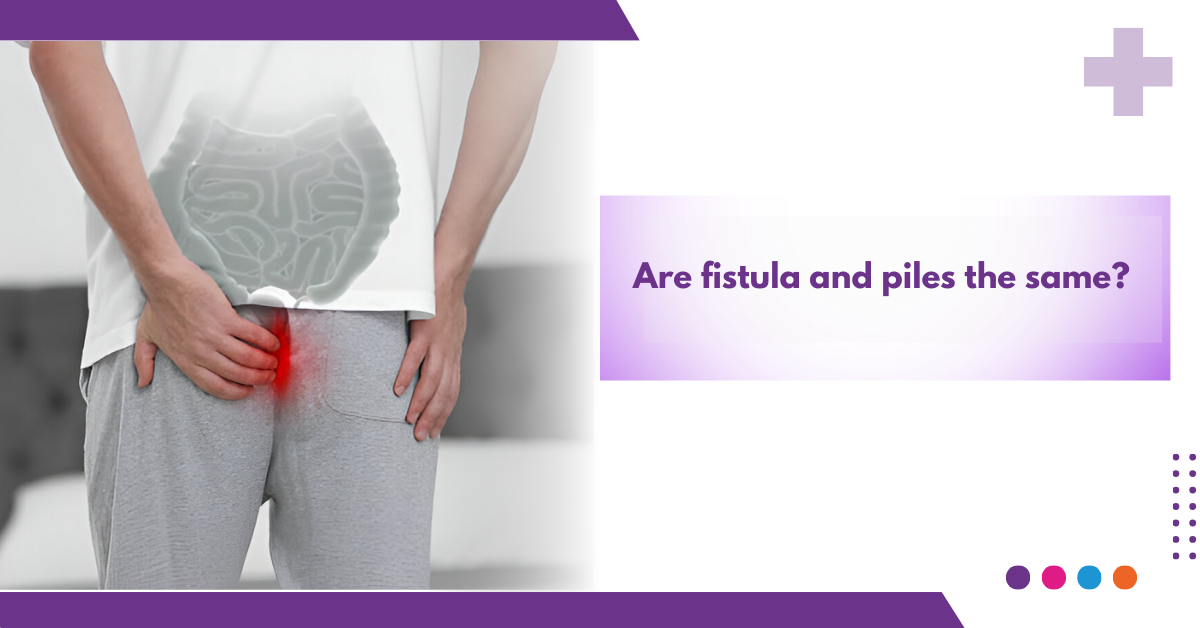
People often think they have piles when they experience any discomfort or pain in the anus. Although piles, fissures, and fistulas may feel similar, they are actually different conditions. Confusion between the conditions is common but knowing what the difference is between piles and fissure or how a fistula forms is important for diagnosis and management.
In this blog, we’ll clear the confusion about these conditions, discuss piles and fistula symptoms.
What are piles?
Piles are occupying blood vessels in the rectum or anus with swollen, inflamed blood vessels. They are an incredibly common condition, especially for adults who are sedentary, who have chronic constipation, or who heavily strain during bowel movements.
What are the common symptoms of piles?
If you identify piles sooner rather than later, it allows you to handle them more effectively. These are the main symptoms:
- Spotting blood on the toilet paper after passing stools.
- Itching or irritation in the anal area.
- A swollen, inflated area (lump) near the anus
- Pain or discomfort, most especially while seated.
- Mucosal discharge after passing a stool.
What are the stages of piles?
There are several stages to piles as they develop; it’s useful to understand these stages, so the severity of the condition may be determined:
Stage 1: There are small swellings (piles) inside the rectum, these are usually painless but may cause bleeding.
Stage 2: Piles that stretch out during a bowel movement but return on their own.
Stage 3: Protrusion occurs and requires manual pushing back inside.
Stage 4: Piles remain permanently outside the anus, often painful and may require surgery.
Proper treatment by a piles specialist in Coimbatore can be sought at any of these stages of the condition, which should prevent complications.
What is a fistula?
A fistula is referred to an uncommon passage that forms between the inside of the anus or rectum and the nearby skin. They commonly develop as a complication of an abscess or infection in the anal glands that has not been treated. A fistula very rarely heals by itself, unlike piles, and will usually require surgery.
What are the symptoms of a fistula?
- Oozing pus or blood from a Fistula opening located near the anus
- Swelling and redness in the anal area
- Pain when sitting or when having a bowel movement
- Fever and exhaustion if the infection is spreading.
If you notice concerning symptoms, reach out to a trusted general surgery hospital in Coimbatore for expert guidance.
How can fistula occur?
When waste blocks the small glands around the anus, it can lead to an infection and cause pus to collect. If this fluid does not properly drain, then it can create a fistula, which is an abnormal tunnel from one part of the body to another. The main reasons anal fistulas form are infections like anal abscesses or blocked anal glands. In rare circumstances, anal fistulas can arise from other conditions such as:
- Cancer
- Trauma
- Sexual infections
- Tuberculosis
Are Fistula and Piles the Same?
No, fistula and piles are not the same. Although both affect the anal region, they are different in nature:
- Piles: Swollen blood vessels of the anus/rectum.
- Fistula: An unnatural channel formed by an infection or abscess.
Piles symptoms may include bleeding, itching, and swelling whereas a fistula typically has ongoing discharge and recurrent infection. A General Surgery Hospital in Coimbatore is appropriately set up to discover what the condition is from examination and tests.
Why does early diagnosis matter?
Ignoring piles or fistula can lead to chronic pain, recurrent infections, or complications. Since symptoms often overlap, consulting a piles specialist in Coimbatore ensures proper diagnosis.
When should you see a specialist?
You should consult a piles specialist in Coimbatore if you experience:
- Persistent bleeding during bowel movements
- Severe pain or lumps around the anus
- Continuous pus or discharge from the anal region
- Difficulty in passing stools or recurring constipation
- Recurrent infections or swelling in the anal area
Delaying consultation can worsen the condition, especially if it’s a fistula that won’t heal on its own.
Is there a possibility for fistulas and piles to be at the same location?
Hemorrhoids are swollen veins in the lower rectum or around the anus. They can be internal or external.
Internal piles usually form 2–4 cm inside the rectum, while external piles appear just outside the anus, around its edge. Internal piles are more common, but in both cases, the size can vary.
A fistula, on the other hand, is different. Unlike piles, which occur only in the anal region, fistulas can form in various parts of the body—such as the neck, throat, colon, or skin surfaces.
An anal fistula specifically refers to an infected tunnel that develops between the inside of the anus and the skin around it. The point where it opens to the outside is called the anal opening.
What are the treatment options for piles and anal fistulas?
The treatment options for anal fistulas include:
Since a fistula doesn’t usually heal on its own, treatment is focused on removing the infection and closing the abnormal passage.
Medications – Antibiotics and pain relievers may be given to control infection and discomfort, but they don’t cure the fistula.
Fistulotomy – The most common surgery where the fistula tract is opened up and allowed to heal naturally.
Seton placement – A special surgical thread is placed inside the fistula to keep it open and drain infection slowly before further surgery.
Advanced procedures – Such as LIFT (ligation of intersphincteric fistula tract), fibrin glue injection, or laser surgery that help seal the fistula while protecting the anal muscles.
The treatment options for piles or hemorrhoids:
Treatment depends on the stages of piles (from mild to severe).
Lifestyle changes – High-fiber diet, plenty of water, regular exercise, and avoiding straining during bowel movements.
Medications – Creams or ointments to relieve itching, pain, and swelling.
Minimally invasive procedures:
Rubber band ligation – A small band is tied at the base of the pile to cut off blood supply, making it shrink.
Sclerotherapy – A medicine is injected into the pile to shrink it.
Infrared coagulation or laser therapy – Heat or laser shrinks the piles.
Surgery (Hemorrhoidectomy or Stapler surgery) – For large or persistent piles that don’t respond to other treatments.
What are the preventive tips for piles and fistulas?
Preventive tips for piles:
- Eat a high-fiber diet – Include plenty of fruits, vegetables, whole grains, and legumes to keep stools soft and easy to pass.
- Stay hydrated – Intake of 8–10 glasses of water in a day is important to avoid constipation.
- Avoid straining during bowel movements – Straining puts pressure on rectal veins and can trigger piles.
- Don’t delay the urge to pass stools – Holding it in can make stools harder and lead to constipation.
- Exercise regularly – Activities like walking or yoga improve digestion and blood circulation, reducing the risk of piles.
- Avoid sitting for long periods – Especially on the toilet, as it increases pressure on the anal area.
Preventive tips for fistula:
- Treat anal infections promptly – Untreated abscesses or infections around the anus can lead to fistulas.
- Maintain good anal hygiene – Clean the area gently and regularly to prevent infections.
- Manage chronic conditions – Conditions like Crohn’s disease or tuberculosis can increase the risk, so proper treatment is important.
- Eat a balanced diet – A diet that prevents constipation also reduces the chance of anal abscesses that may cause fistulas.
- Avoid prolonged sitting – Sitting too long can increase the chance of developing anal infections and discomfort.
Important Takeaway
Piles and fistula are often confused, but they are distinct conditions. While piles are swollen veins in the anus, fistula is an abnormal tunnel caused by infection. Knowing the difference between piles and fissure, identifying piles symptoms, and being aware of the stages of piles are essential for timely care.









